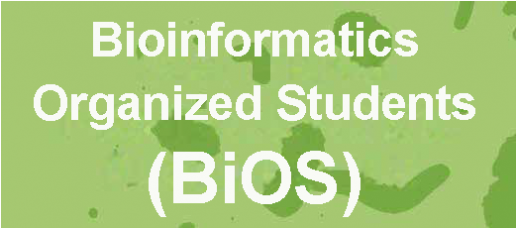Germany
Germany
Humboldt University Berlin: Theoretical Biophysics Group
The lab’s main interest is the study and mathematical modeling of biological organisms on the cellular and subcellular level. Its aim is to develop new techniques and software, and incorporate new and well-established knowledge to get a better understanding of the fundamentals of life. They have a special interest in: Yeast, Bacillus subtilis and Mammalian cells.
Humboldt University Berlin, Institute of Biology, Department of Theoretical Biology
The lab’s research focuses on molecular and cellular evolution, DNA chips and reverse engineering, and biomedical applications of nonlinear dynamics.
The lab performs statistical analysis of DNA and protein sequences. Building on methods from statistical physics (correlation functions, mutual information, entropies), statistical dependences in sequences are analyzed. There are strong indications that interesting general aspects of the evolution of genomes can be made accessible from such statistical examinations.
High density DNA-arrays (“DNA chips”) allow measurements of gene expression levels for a large number of genes simultaneously. In this way thousands of mRNA concentrations can be analyzed in parallel, potentially revealing complex gene regulatory networks. The lab assesses the data reliability (image analysis, calibration, reproducibility), identifies co-regulated genes by cluster analysis, and detects transcription factor binding sites in clusters of co-regulated genes. It is their aim to incorporate the resulting information into network models of signaling cascades such as the Ras pathway.
Max Planck Institute for Molecular Plant Physiology Systems Biology and Mathematical Modeling Group
The group is focusing on the development of mathematical models of biological systems. We apply differential equations, convex algebra, stochastic equations, and other mathematical concepts to describe and simulate metabolic and regulatory systems. The aims of our models are to explain the mechanisms underlying molecular interaction networks and to uncover design principles which lead to increased robustness, higher flexibility or better adaptability to changing environmental factors. Applying evolutionary models to simulate the development of interaction networks under random mutations and selective pressure, we strive at understanding how characteristic structural properties of complex networks may have emerged.
Max-Delbrück Center for Molecular Medicine, Mathematical Cell Biology
The lab’s projects include research on cellular and intercellular movement mechanisms, and continually distributed neural networks.
Humboldt University Berlin, Charité, Institute of Biochemistry, Computational Systems Biochemistry Group
The main goal of our research is the development of mathematical models enabling computer simulations of the dynamical behavior of complex molecular reaction systems operating at cellular level as, for example, metabolic pathways, proteolysis and antigen presentation, or self-organization of cellular organelles. Cell types under current investigation comprise hepatocytes, parasites (Toxoplasma gondii, Plasmodium falciparum), erythrocytes, and neurons.
Free University Berlin, Institute of Chemistry and Biochemistry, Dept. of Biology, Chemistry, Pharmacy, Macromolecular Modeling Group
The lab’s projects include simulation of long-time-dynamics of proteins by a Monte Carlo method, free energy computations of protein substrate binding, structure and dynamics of protein-water systems, normal mode analysis of protein vibrations and fluctuations, simulation of the dynamics of biological macromolecules in torsion angle space, structure and function of photosynthetic reaction centers, calculation of protonation and redox potentials of molecular groups in proteins, simulation of electron transfer in and between proteins, pharmacophore matching and indirect drug design, docking of substrates and drug design, simulation of protein-protein-association, quantum chemical computations of pKa values and redox potentials, rediction of protein structures with neural networks, and prediction of protein structures with an optimized energy function.
Humboldt University Berlin, Charité, Institute of Molecular Biology and Bioinformatics, Structural Bioinformatics Group
Our goal is to undertake bioinformatics-related research and education with emphasis on structural bioinformatics to improve our understanding of living systems.
This understanding covers research into evolution, structure, function, and interaction of proteins, and disease relationships with focus on immunology and cancer. We accept the challenge to predict the results of in vitro experiments by in silico screening and simulation.
Max-Delbrück Center for Molecular Medicine, Systems Biology of Gene Regulatory Elements Group
The Rajewsky Lab uses computational and experimental methods to dissect, systems-wide, function and evolution of gene regulation in metazoans. One major focus is to understand more about gene regulation by small RNAs, in particular microRNAs. To probe general mechanisms in gene regulation of microRNAs, the lab works with cell lines. We are also investigating the function of small RNAs during very early development of C. elegans. Furthermore, the lab has established planaria as a model system within the lab. These freshwater flatworms are famous for their almost unlimited ability to regenerate any tissue via pluripotent, adult stem cells. The lab is studying the role of small RNAs in planarian regeneration.
Max Planck Institute of Molecular Genetics, Department of Computational Molecular Biology, Gene Regulation Group
A transcription factor tends to bind to particular DNA patterns which can be summarized by so-called Positional Weight Matrices (PWMs). After having explored the power and problems of matching PWMs to sequence in the CORG-database, we have developed an alternative biophysics-inspired approach. This “TRAP” method (for Transcription Factor Affinity Prediction) transforms the match between a sequence and a pattern into a binding probability and integrates over the region of interest, say a promoter region. The TRAP method has been validated by comparison to large-scale DNA binding experiments (ChIP-chip and ChIP seq experiments) and shown to be successful in predicting novel target genes of transcription factors. Based on a statistical normalization of the affinity scores, the most likely binding factors to a particular promoter can be inferred. Together with the group of Stefan Haas, TRAP has further been utilized to recognize transcription factor binding sites which are over-represented in co-expressed or tissue-specific groups of genes. Ongoing work applies TRAP for predicting possible effects of regulatory SNPs. It has also been applied in the context of deriving gene regulatory networks.





